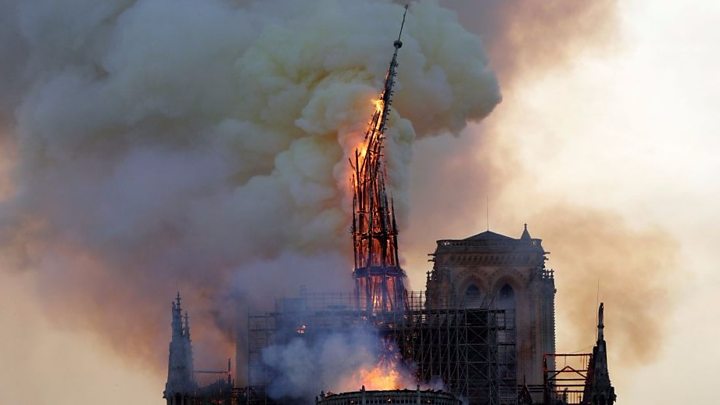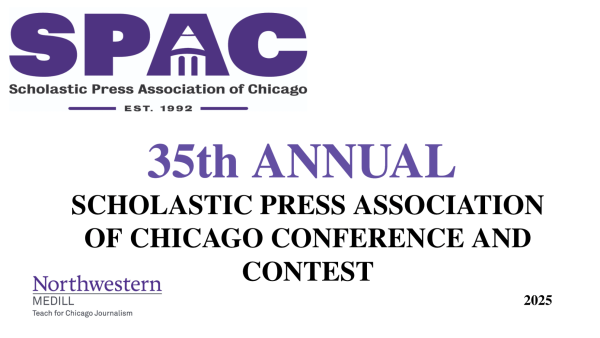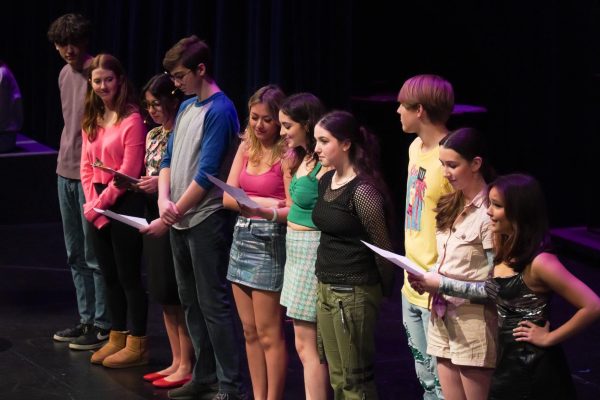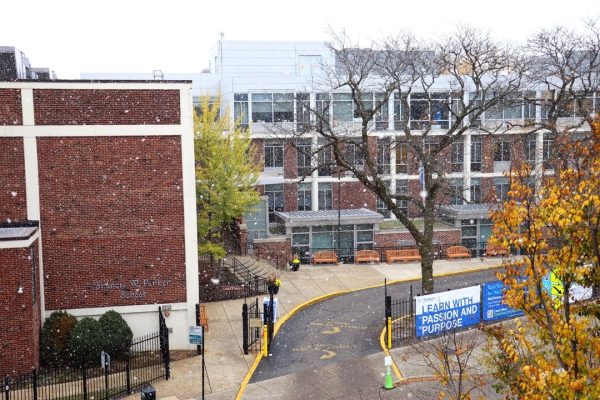Parker Reacts to Paris Landmark Burning
Notre Dame Cathedral Devastated By Fire
A fire at the Notre Dame Cathedral in Paris, France, burned the interior of the 856-year-old monument, on Monday, April 15th. The fire was powerful enough to cause structural damage that led to the collapse of the iconic Cathedral spire. The fire burned for several hours, and officials announced that the fire was under control and invaluable artifacts were rescued from the burning building.
Officials have not yet confirmed the cause of the blaze. They do not suspect arson or terrorism and speculate that the cathedral’s renovations could have had an impact.
French Lieutenant Colonel Gabriel Plus stated Tuesday morning that “the entire fire is out,” and that the emergency services were “surveying the movement of the structures and extinguishing smoldering residues.” In addition, Plus said that with the fire out, the next “phase is for the experts” to plan how to repair what is left of the building.
On the Tuesday after the fire, French President Emmanuel Macron addressed the nation, saying that he wanted to rebuild the landmark within five years. However, experts have reported that the construction could realistically take decades to rebuild. The damage itself is extensive, with stone and charred wood littering the inside of the church and gaping holes in the roof allowing light to shine through. The beams of the roof cannot be exactly remade as there are no trees that match the size of those from the century when the cathedral was constructed.
Among the many Parisians that were watching this catastrophic event unfold, Parker sophomore Noah Keim was in the capital to witness the cathedral on fire. “It was kind of a state of mourning on the banks of the Seine,” Keim said, “and many people were singing and many people were taking photographs.”
As tragic as this was to viewers all around the world, Keim thinks that there was a heavier impact on the residents of Paris. “It was a very disappointing sight,” Keim said, “and I think a lot of French people were very hurt and felt like it was a part of their cultural identity and lost a bit of themselves in the cathedral when it burned. But thankfully, it’s not completely burned down and they’re going to start rebuilding it.”
Upper School French Teacher Lorin Pritikin feels similarly to Keim. “I think that Notre Dame is obviously, aside from the Eiffel Tower, a very iconic symbol of not just Parisian life but French culture,” Pritikin said. “I think that it’s not really even the religious piece, a religious symbol, even though it’s a cathedral, it just is probably, again, the second most iconic symbol of France, and so I think that people, both tourists and the French alike both flocked to the area as close as they could get. There was a sense that they had to go and see, kind of, come close and witness it for themselves.”
While the cost of repairs to the cathedral is estimated to be $8 billion, many wealthy French citizens are donating money, and the current pledged donations are estimated to be around a billion dollars. Despite the money going towards rebuilding a burned monument of Paris, questions of economic inequalities in France continue to rise, as a result of the Yellow Vest protests that broke out in France in November of 2018.
This issue is not lost on Pritikin, as she knows the situation and the events leading up to this controversy. “Coming off the gilets jaunes, or the yellow vest movement, that lasted for quite some time,” Pritikin said, “which was a movement by the working class, if you will, against the landed class or the one percent, as we call it here, there’s a tremendous amount of controversy because overnight, two French billionaires that are often in competition with one another, each pledged $100 million dollars.”
The issues began to rise when a former culture minister, Jean-Jacques Aillagon, went on Twitter after François-Henri Pinault, France’s second-richest man, announced that he would be donating 100 million euros (roughly $113,000,000), to suggest that corporate contributions to Notre-Dame’s restoration be given a 90 percent tax deduction, rather than the 60 percent that corporations normally get for charitable contributions. After the outcry, Aillagon retracted his statement, and Pinault stated he would not be seeking a deduction, but the question of French inequality still remained.
Those who participated in the Yellow Vest protests are not pleased with this sudden turn of events. “They are furious because they have always maintained, that with a snap of a finger, millionaire, billionaire, individuals, and politicians, many of whom have their own personal treasure troves, could just write checks to solve the ills of the financial inequities,” Pritikin said.
Pritikin recognizes how the protesters feel now that this money has been pushed towards a different cause. “I certainly understand the sentiments of those who have been protesting financial inequities. I actually can understand why they’re horrified, that this thing, a cathedral, as important an icon as it is, moved these people to pledge hundreds of millions of dollars,” Pritikin said. “Where if you look at poverty, obviously, all the same ills that we have –healthcare, poverty, education, substance use and abuse, housing– when you look at all of those issues, and you see, just the apathy, I suppose would be the word, the lack of financial engagement of these individuals toward human beings.”
Pritikin feels that there are other ways for the money to be put to use. “So if you ask me, ‘do I think the money could be put to better use,’ yes. I think it’s pretty obscene,” Pritikin said. “But do I understand why these individuals were moved to rebuild Notre Dame and not moved to send in their checks to help the less fortunate. Yes, it is the inequity of a capitalist and democratic society.”













